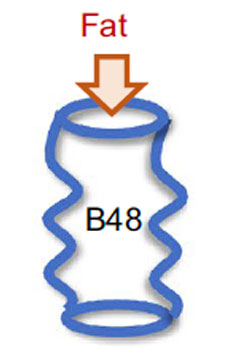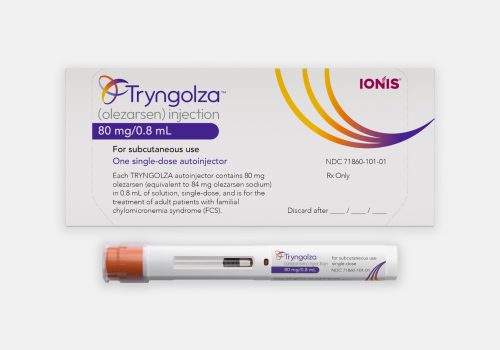
Abnormal metabolism of intestinal lipoproteins containing ApoB-48 may help to explain the residual risk of cardiovascular disease (CVD) in patients with type 2 diabetes (T2D) on statin therapy. This suggestion has emerged from a study which compared the kinetics of ApoB-48- and ApoB-100-containing lipoproteins in 11 overweight/obese individuals with T2D with those in 11 control participants frequency-matched for age, BMI and sex. Both groups were on a similar statin regimen during the study, and those with T2D were on stable doses of metformin and had lifestyle counselling.
While the fasting lipid profile did not differ significantly between the two groups, the chylomicron TG and ApoB-48 levels in response to a fatty meal in patients with T2D were approximately twice those in the control group. There was also a two-fold higher increment in ApoB-48 particles in the VLDL1 and VLDL2 density ranges (all p<0.05). Total ApoB-48 production was 25% higher in those with T2D than controls (556±57 vs 446±57 mg/day; p<0.001), conversion (fractional transfer rate) of chylomicrons to VLDL was around 40% lower (35±25 vs 82±58 pools/day; p=0.034) and direct clearance of chylomicrons was 5.6-fold higher (5.6±2.2 vs 1.0±1.8 pools/day; p<0.001). During the postprandial period, ApoB-48 particles accounted for a higher proportion of total VLDL in individuals with T2D (44% vs 25%), and these ApoB-48 VLDL particles spent five times longer in the circulation (p<0.01).
In contrast, there were no differences between the groups in the kinetics of ApoB-100 and TG in VLDL, or in LDL ApoB-100 production, pool size and clearance rate. Compared with control participants, the IDL ApoB-100 pool in individuals with T2D was higher due to increased conversion from VLDL2.
“The implication of our study is that much greater investigation of postprandial lipoprotein structure, metabolism and particle atherogenicity is required to better understand the basis of residual risk in statin-treated individuals and, possibly, the results of cardiovascular outcome trials. New targets for intervention will undoubtedly arise as this cryptic risk factor is made more overt,” concluded the researchers.
Reference
Taskinen MR, Matikainen N, Björnson E et al. Contribution of intestinal triglyceride-rich lipoproteins to residual atherosclerotic cardiovascular disease risk in individuals with type 2 diabetes on statin therapy. Diabetologia 2023 Sep 29. Epub ahead of print.







